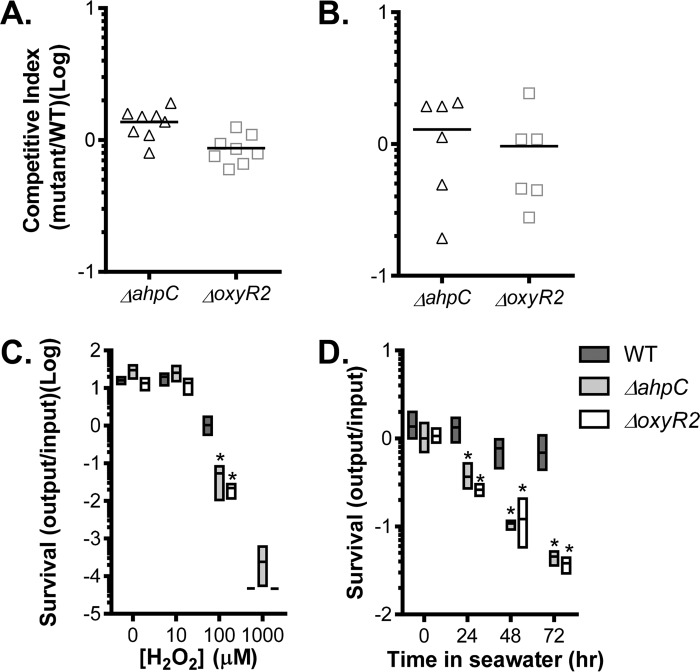FIG 5.
Physiological roles of OxyR2-AhpC. (A) Infant mouse colonization. Approximately 106 cells of the wild type (lacZ) and ΔoxyR2 or ΔahpC mutants (lacZ+) were intragastrically inoculated into 6-day-old CD-1 mice in a 1:1 ratio. After a 12-h incubation, CFU from small intestines was determined by serial dilution and plating on LB agar. The data shown are from three independent experiments, and each symbol represents CFU recovered from one mouse intestine. The horizontal line represents the average number of cells recovered. (B) Streptomycin-treated adult mouse model. Five-week-old CD-1 mice were treated with streptomycin, and a saturated culture of wild type (lacZ) and mutants (lacZ+) was mixed in a 1:1 ratio and intragastrically administered to each mouse. Fecal pellets were collected from each mouse after 3 days, resuspended in LB, serially diluted, and then plated on plates containing X-Gal. The competitive index (CI) was calculated as the ratio of mutant to wild-type colonies normalized to the input ratio. The horizontal line represents the average CI. (C) Anaerobic survival. AKI medium with indicated concentrations of H2O2 was inoculated with anaerobically grown cultures and grown in the anaerobic chamber at 37°C for 24 h. Samples were serially diluted and plated to enumerate cell counts. Growth was measured and represented as a ratio of output/input. (D) Seawater survival. The wild type, ΔahpC, or ΔoxyR2 strain was grown in AKI medium anaerobically at 37°C for 4 h. Bacterial cells were then collected, washed, and then resuspended in artificial seawater and incubated at 22°C. At the indicated intervals, viable cells were determined by serial dilutions and plating on LB plates. Data shown represent the mean and standard deviation from at least three biological replicates. *, P value < 0.05.

